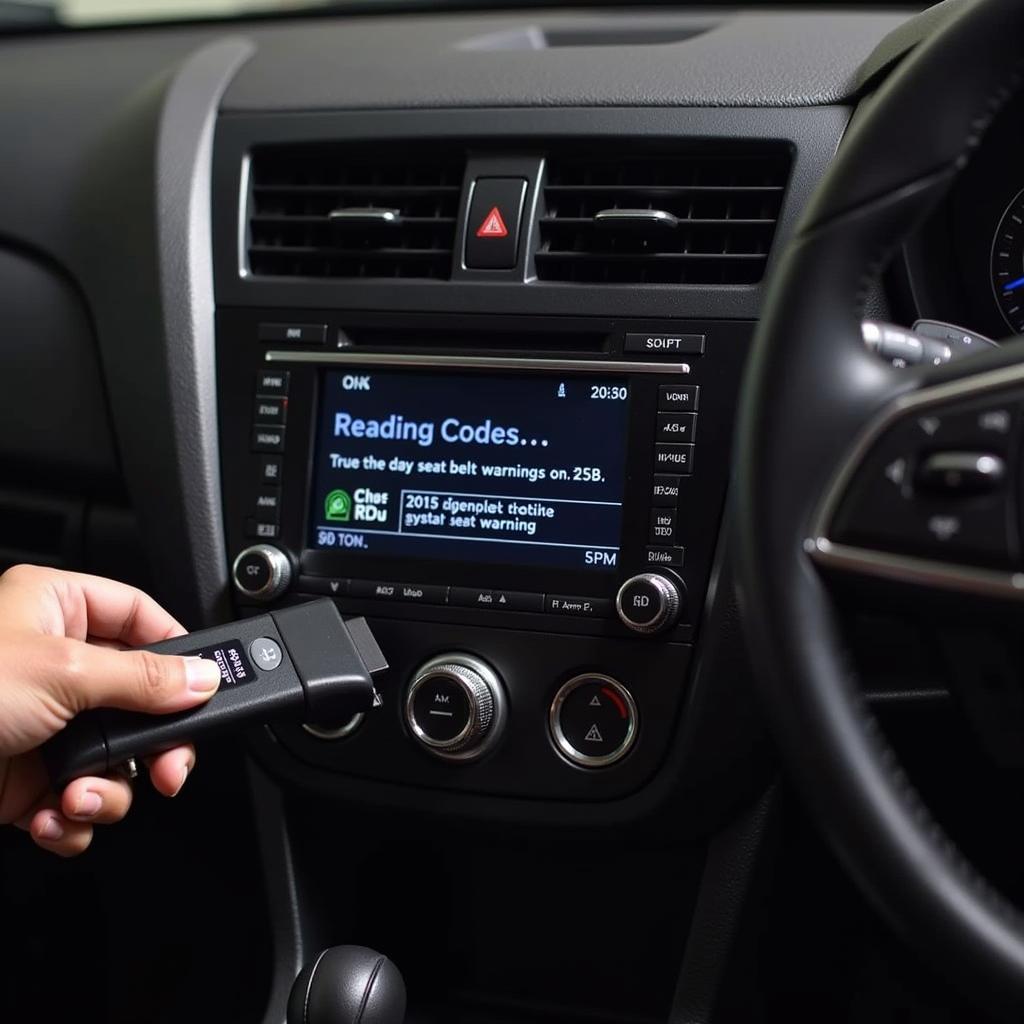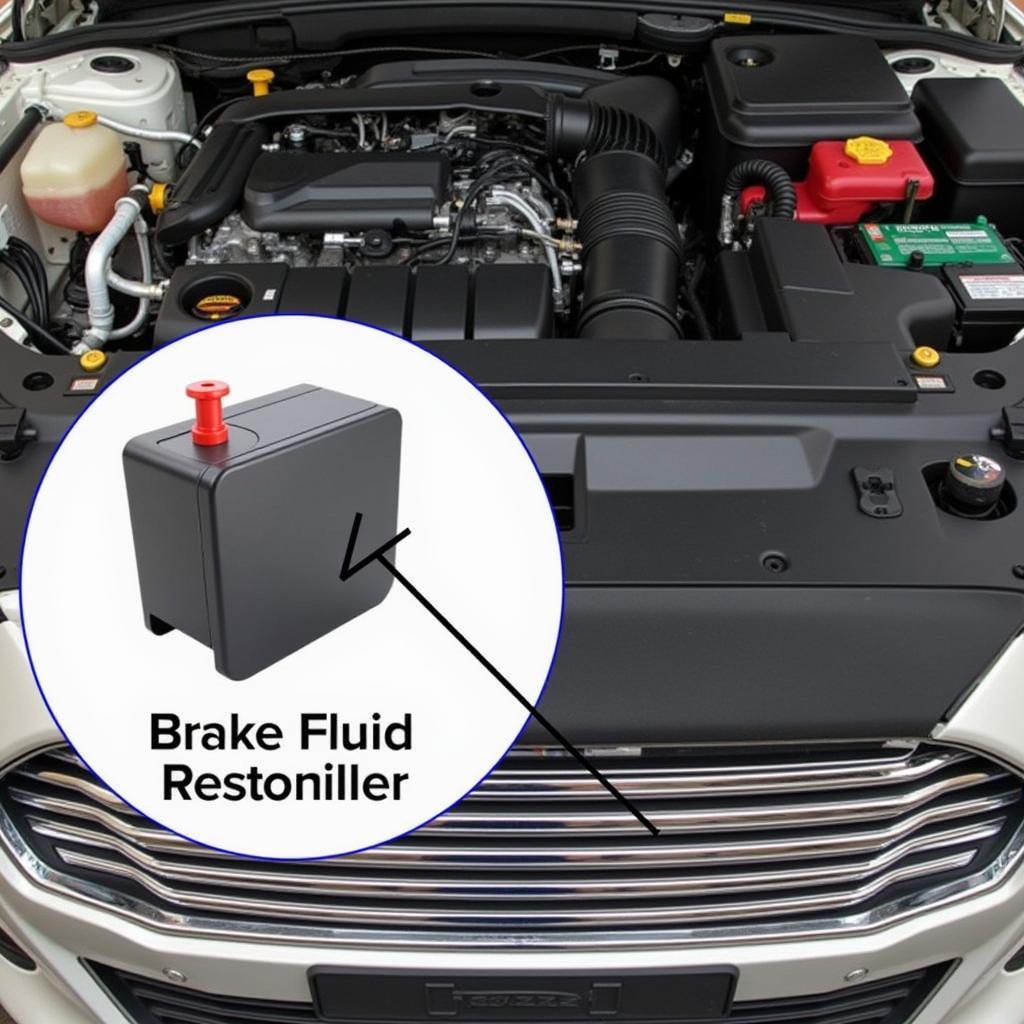The 2015 Subaru Outback is renowned for its safety features, particularly its comprehensive seat belt warning system. While this system is crucial for passenger safety, some owners have reported issues with the seat belt warning chime, finding it overly sensitive or persistent even when seat belts are fastened. This article delves into the common causes of these issues and provides troubleshooting tips and solutions to help you reclaim a peaceful driving experience.
Understanding Your Subaru’s Seat Belt Warning System
Before diving into troubleshooting, it’s helpful to understand how your Outback’s seat belt warning system functions. The system comprises several components working in unison:
- Seat Belt Buckle Sensors: Located within each seat belt buckle, these sensors detect whether the buckle is fastened.
- Seat Weight Sensors: Positioned within the seats, these sensors detect the presence of a passenger.
- Control Module: The system’s brain, receiving signals from the sensors and triggering the warning chime and lights when necessary.
When the ignition is turned on, and a seat is occupied but the corresponding belt isn’t buckled, the sensors send signals to the control module. The module then activates the warning chime and dashboard lights to alert the driver and passengers.
Common Causes of a Malfunctioning Seat Belt Warning Chime
Several factors can contribute to a malfunctioning seat belt warning chime in your 2015 Subaru Outback:
- Faulty Seat Belt Buckle Sensor: A damaged or malfunctioning sensor might fail to detect a fastened seat belt, leading to a continuous chime.
- Seat Weight Sensor Issues: A faulty seat weight sensor might inaccurately detect a passenger when the seat is empty, triggering the warning system.
- Wiring Problems: Damaged or corroded wiring within the seat belt warning system can disrupt communication between components, causing malfunctions.
- Control Module Errors: In rare cases, the control module itself may experience software glitches or electrical faults, leading to erratic warning chime behavior.
Troubleshooting a 2015 Subaru Outback Seat Belt Warning Chime
Here are some troubleshooting steps to pinpoint the root cause of your warning chime issues:
- Check for Simple Fixes: Begin with the obvious:
- Ensure all seat belts are properly fastened.
- Inspect the buckle receptacles for any obstructions.
- Confirm that there are no heavy objects placed on the seats.
- Inspect the Seat Belt Buckles:
- Examine the buckle connectors for any visible damage, such as bent pins or debris.
- Listen for a distinct click when fastening the buckle, indicating proper connection.
- Check for Diagnostic Trouble Codes (DTCs):
- A professional-grade OBD-II scanner can retrieve DTCs stored in your Outback’s computer.
- Specific codes related to the seat belt warning system can pinpoint the problematic area.
 Using an OBD-II Scanner on a 2015 Subaru Outback
Using an OBD-II Scanner on a 2015 Subaru Outback
Solutions for a Malfunctioning Seat Belt Warning Chime
Once you’ve identified the potential cause of your seat belt warning chime issue, consider the following solutions:
- Replace Faulty Components:
- If a faulty buckle sensor, weight sensor, or wiring harness is identified, replacement is typically the most effective solution.
- Consult a qualified mechanic or Subaru dealership for genuine parts and expert installation.
- Software Update or Reset:
- In some cases, a software update or reset of the control module might resolve chime-related glitches.
- Subaru dealerships have the necessary tools and expertise to perform these procedures.
When to Seek Professional Help
While some seat belt warning chime issues can be resolved through DIY troubleshooting, it’s crucial to recognize when professional assistance is necessary:
- You suspect a problem with the control module or complex electrical systems.
- The issue persists despite attempting basic troubleshooting steps.
- You lack the tools or expertise to safely diagnose and repair the problem.
Conclusion
The seat belt warning chime in your 2015 Subaru Outback is a crucial safety feature. Addressing any malfunctions promptly ensures the system functions as intended, keeping you and your passengers safe. By understanding the system, employing the troubleshooting tips outlined in this article, and seeking professional help when needed, you can confidently resolve seat belt warning chime issues and enjoy peace of mind on the road.

